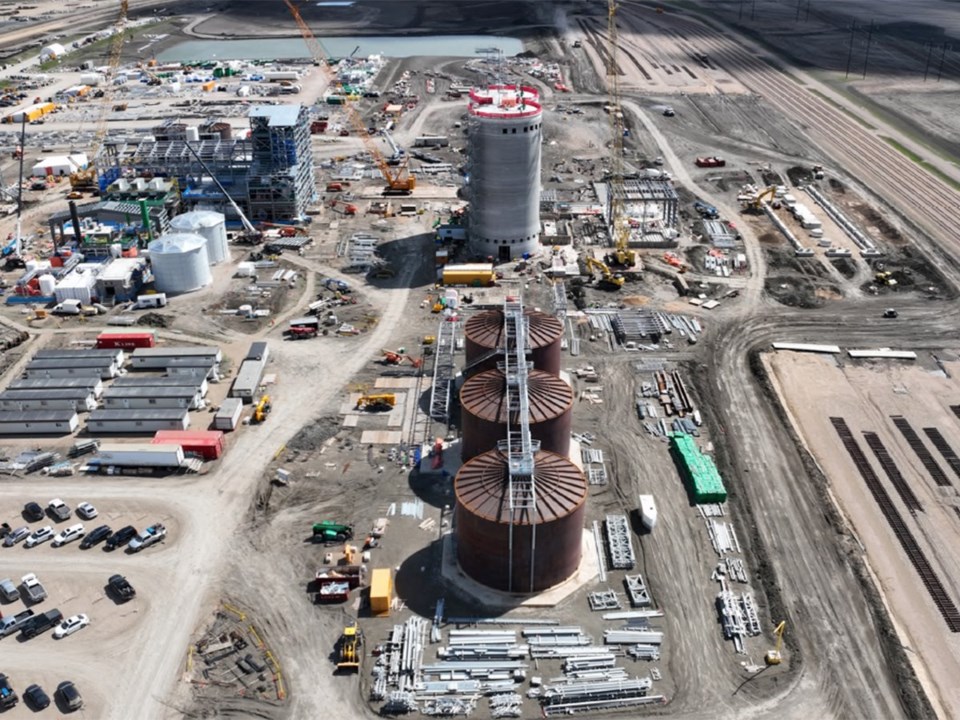Regina’s industrial vacancy rate is steady as high construction costs keep new supply in check amid strong demand.
Vacancies stood at 3.4 per cent in the second quarter, commercial brokerage Avison Young (Canada) Inc. reported this week, down from 3.8 per cent at the end of 2020 in the midst of the COVID-19 pandemic.
Meanwhile, total inventory in the market has increased five per cent to 25.2 million square feet over the period.
“The low vacancy rate signals a healthy absorption of new supply and reinforces investor confidence in the region’s industrial fundamentals,” Avison Young reported.
Strong population growth has driven the shift, says Linely Schaefer, managing director with Avison Young in Regina, boosting demand for goods and in turn space by logistics and transportation companies.
“More goods creates a synergy of its own,” he says.
Regina’s population is expected to increase 2.2 per cent this year to 293,000, according to the Conference Board of Canada and Economic Development Regina, on the heels of 3.6 per cent growth last year. Plentiful job opportunities and some of the most affordable housing in Western Canada are supporting the growth.
Jobs include those associated with the Global Transportation Hub (GTH), home of the new Cargill canola crushing facility that opens this year, and major energy projects across southern Saskatchewan.
“The establishment of the Cargill plant at the GTH is a significant boost for the industrial commercial real estate market in Regina,” Avison Young’s report notes.” It not only increases the demand for industrial spaces but also stimulates further development and investment in the region.”
Avison Young says the construction Cargill’s plant has fuelled the purchase of more than 400 acres near the GTH, improving rail and road infrastructure.
Within the city, PTI Transformers Inc. broke ground this spring on an expansion that will give it the extra capacity needed to handle the large transformers energy projects across Western Canada require.
Yet high land and construction costs are helping keep a lid on the supply of new space.
“Current construction activity has slowed due to high building costs pushing lease rates above what the market will bear,” Avison Young reported.
Statistics Canada’s Building Construction Price Index indicates warehouse construction in Regina has increased 9.8 per cent since 2023. Overall non-residential construction costs have increased 9.4 per cent.
Rents for industrial space in all submarkets are above levels seen in 2020, with the market as a whole averaging $12.45 per square foot. Certain segments within the city average below $12 per square foot while Ross Industrial Park East, with newer product, averages nearly $16 per square foot.
“New builds are so expensive,” Schaefer said. “With the new building code, it makes it very, very difficult to achieve those numbers, especially in warehousing and industrial.”
This has sent the majority of new construction to the rural municipalities surrounding Regina, where costs are lower and it’s easier to make the numbers work.
A government initiative, the GTH doesn’t face the same financial constraints other industrial ventures do. Land costs average $143,000 per acre, versus $550,000 per acre in the rest of the Regina market. The difference offers a compelling reason to look outside the city.
But the rural municipalities come with a trade-off.
“The taxes are a little less, but so are the services,” Schaefer said. “Outside the city limits, you’re not getting wastewater; you’re going to get stuck with having your wastewater pumped because there’s no sewer connection.”
Colliers, in its own snapshot of the market, indicates just 82,300 square feet of industrial space under construction in Regina.
“While the construction pipeline did increase on a square footage basis in Q2, new supply has yet to be delivered in 2025,” Colliers reported earlier this month. “As such, industrial vacancy rates are expected to remain mostly level or even tighten further in the second half of the year.”



